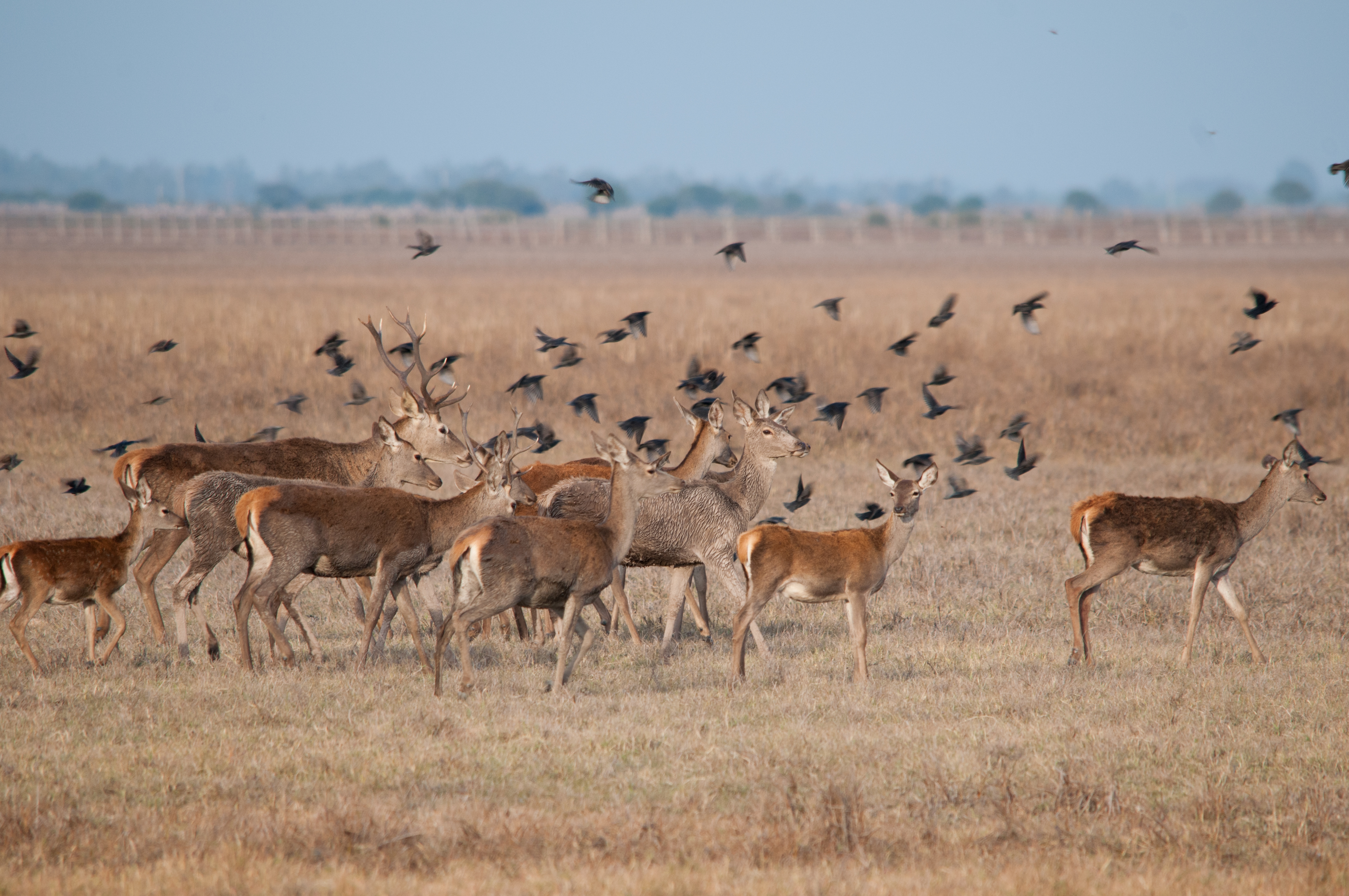
Bluetongue (BT) is a viral disease (Orbivirus) transmitted mainly by blood-sucking insects of the genus Culicoides that affects domestic and wild ruminants. It was described for the first time in South Africa in 1902 and underwent a great geographical expansion at the beginning of the 21st century, with several serotypes being described in Europe.
Doñana is a relevant area to learn about the status and evolution of infectious diseases that affect ungulate communities, since wild ungulates and cattle coexist within a unique natural space in Europe. After the outbreak of BT of serotype 4 detected in Spain in 2004 and as part of the National Park's health monitoring program, a study of BT was started in Doñana, in which members of the ICTS Natural Processes Monitoring team participated.The objective is to determine the status and the temporal trend of the disease. For this, serum samples were taken from more than 800 individuals of red deer (Cervus elaphus) and common deer (Dama dama) between the years 2005-2018. In order to explain its evolution over time, individual variables (sex and age), population (density), environmental (vegetation cover) and stochastic (precipitation and temperature) were taken into account.
The results indicated greater seroprevalences in red deer, where virus transmission is favored by high population densities in the wettest years and by greater exposure to permanent pastures suitable for Culicoides. This study has been led by the Research Institute of Hunting Resources (CSIC-UCLM), and has the collaboration of the University of Cordoba, the Complutense University of Madrid, the Autonomous University of Barcelona and the Doñana Biological Station - CSIC.
Patricia Barroso, María A. Risalde, Ignacio García - Bocanegra, Pelayo Acevedo, José Ángel Barasona, Pablo Palencia, Francisco Carro, Saúl Jiménez-Ruiz, Joan Pujols, Vidal Montoro, Joaquín Vicente. Long-term determinants of the seroprevalence of the bluetongue virus in deer species in southern Spain. Resarch in Veterinary Science. https://doi.org/10.1016/j.rvsc.2021.07.001
http://icts.ebd.csic.es/home/-/asset_publisher/XK7SruSAAhGq/content/anos-mas-humedos-altas-densidades-de-ciervos-y-un-mayor-uso-de-pastizales-permanentes-favorece-la-transmision-de-lengua-azul-en-donana?inheritRedirect=false&redirect=http%3A%2F%2Ficts.ebd.csic.es%2Fhome%3Fp_p_id%3D101_INSTANCE_XK7SruSAAhGq%26p_p_lifecycle%3D0%26p_p_state%3Dnormal%26p_p_mode%3Dview%26p_p_col_id%3D_118_INSTANCE_BHgplqOrdUaC__column-1%26p_p_col_count%3D1 


